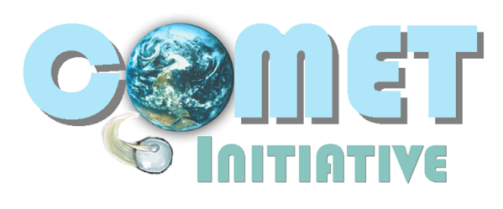
In clinical trials, biomedical or health-related outcomes – for example quality of life, side effects or pain – are measured to assess how well a particular treatment is working, often comparing a new therapy with standard care. Core outcome sets are lists of agreed outcomes that can help in identifying what treatments are the most effective by enabling people to compare findings between different clinical trials looking at the same health condition. However, these comparisons can only be made when:
- An agreed core outcome set exists; and
- Researchers running clinical trials on the same medical condition all measure these outcomes.
This is where the Core Outcome Measures in Effectiveness Trials (COMET) Initiative comes in. Launched in 2010, this is an international collaboration that aims to provide the resources to help people in exchanging ideas and information, and also support relevant research, to develop core outcome sets.
The COMET Initiative was launched in 2010
The ISRCTN registry have been working with the COMET Initiative to improve how outcome measures are listed in the clinical trial records submitted for registration, by providing guidance to trialists submitting their studies for registration and referring them to the COMET Initiative resource, as appropriate. I was invited to present our findings so far at the annual COMET meeting, which this year was held in Amsterdam on 10–11 November.
Development of Core Outcome Sets
The opening session of the conference set what I consider to be the theme for the whole meeting, that of public and patient participation. There was much discussion on the increasing contributions made by both patients and general members of the public, how they themselves perceive their contribution and what outcome measures they considered to be most relevant to them.
This included a presentation on the COMET People Participation Involvement and Engagement (PoPPIE) Working group. The COMET initiative set up this group to support researchers working with patients, parents, carers and other members of the public to help develop core outcome sets; here they showcased the group’s current resources and describing their plans for the future.
The increasing emphasis on public and patient participation became clearer still as groups described how they developed their individual core outcome sets; most talked about consensus meetings with patient groups and health professionals and how each group facilitated the process.

One study that was slightly different, however, involved looking at pre-existing data, such as published papers, systematic reviews and “grey literature” databases to develop parent and patient outcomes for a neonatal core outcome set. Over 1000 papers were included in the analysis, from which data such as what neonatal outcomes were important to previous patients, parents and health professionals were obtained. Work is now being done to determine whether this existing data is enough on its own to develop a neonatal core outcome set.
Implementation of Core Outcome Sets
But what happens once a core outcome set has been agreed upon? This question was tackled by a range of talks from researchers investigating different ways of promoting the use of outcome sets and how to implement them. Of particular interest to me was some research taking place at the University of Liverpool, looking at citations as a means to measuring how many people were using core outcome sets.
Classification of Core Outcome Sets
There were also some talks on the classification of different outcome measures. These included the development of a classification system for outcomes included in core outcome sets identified from Cochrane systematic reviews included in the COMET database and the CFAST project.
One of my personal highlights was a talk describing the Cochrane PICO. This ontology is used for the annotation of evidence using a variety of tools including a PICO annotator, PICOfinder browser and vocabulary browser. As part of this work, Cochrane uses a 14-item categorisation of outcomes as developed by the COMET initiative.
My other highlight, of course, was being given the opportunity to describe the work undertaken by the ISRCTN over the course of this year to improve the quality of the outcome measures included as part of a registered study record. The results so far, which do indeed show an improvement, are qualitative in nature but do raise several intriguing questions for the future, such as (1) to what extent do ISRCTN outcome measures reflect core outcome sets and (2) whether clinical trial records have a role to play in promoting them.
The ISRCTN registry have been working to improve the quality of outcome measures listed in registered study records.
Final Thoughts on Core Outcome Sets
I found the conference to be very enlightening and I learned a significant amount about how core outcome sets are developed, how important is it to involve patients and the general public in the process and what people are doing with existing core outcome sets now. I look forward to seeing how the COMET Initiative resource expands to include an ever-increasing number of core outcome sets and what future developments unfold.
Comments